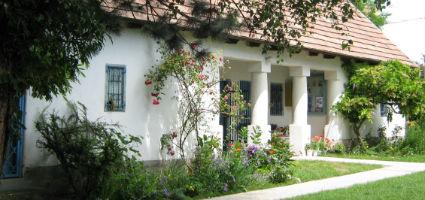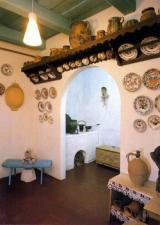2024. April 25. Thursday
Village Museum, Nagytarcsa - Nagytarcsa
 |
Address: 2142, Nagytarcsa Múzeumkert u. 21.
Phone number: (70) 379-8262
Opening hours: Tue-Wed 10-16, Thu-Fri 10-14
|
The peasant house built in the style of the great Hungarian plains was a part of the Tessedik Sámuel popular high school established in 1938. This institute was meant for the further education of the peasants. Besides maths, literature, geography and history, subjects like falk music (Bartók, Kodály), ethnography and popular arts were also taught. Because of the second World War the popular high school ceased to function.
Plans were laid for the protection of the ethnographic relics for the future generations.
Collection works began in 1959. The inhabitants of Nagytarcsa soon realized the importance of forming a village museum. They gladly donated their cherished items to the collection.
The first permanent exhibition was opened in the bilding presently seen.
When the Authority of the Museums in Pest County was formed, the museum was also shifted under the supervision of the county. Tematic exhibitions were arranged annually, and the number of donators were gradually growing.
In 1964 the county authorities renovated and altered the house in order to arrange an interiour representing the life of the middle peasants.
The operational permit was given to the museum in 1965. Since then several new rooms were attached to the building. These rooms give home for permanent exhibitions.
Relics were preserved in the Village Museum from the copper, the Scythian and the Sarmate age. Relics found in the cemetary of the 10th century prove that Hungarian conquerors used to live here.
The museum has shown a good number of permanent and temporal exhibition s. Historic and ethnographic lectures were held. Popular arts, classical music and literature were also dealt with in our programmes.
Several settlements of the country exhibited some part of our ethnographic collection (Cegléd, Gödöllő, Szentendre, Szob, Vác and Budapest).
Molnárné Margit Hajdú
Plans were laid for the protection of the ethnographic relics for the future generations.
Collection works began in 1959. The inhabitants of Nagytarcsa soon realized the importance of forming a village museum. They gladly donated their cherished items to the collection.
The first permanent exhibition was opened in the bilding presently seen.
When the Authority of the Museums in Pest County was formed, the museum was also shifted under the supervision of the county. Tematic exhibitions were arranged annually, and the number of donators were gradually growing.
In 1964 the county authorities renovated and altered the house in order to arrange an interiour representing the life of the middle peasants.
The operational permit was given to the museum in 1965. Since then several new rooms were attached to the building. These rooms give home for permanent exhibitions.
Relics were preserved in the Village Museum from the copper, the Scythian and the Sarmate age. Relics found in the cemetary of the 10th century prove that Hungarian conquerors used to live here.
The museum has shown a good number of permanent and temporal exhibition s. Historic and ethnographic lectures were held. Popular arts, classical music and literature were also dealt with in our programmes.
Several settlements of the country exhibited some part of our ethnographic collection (Cegléd, Gödöllő, Szentendre, Szob, Vác and Budapest).
Molnárné Margit Hajdú
